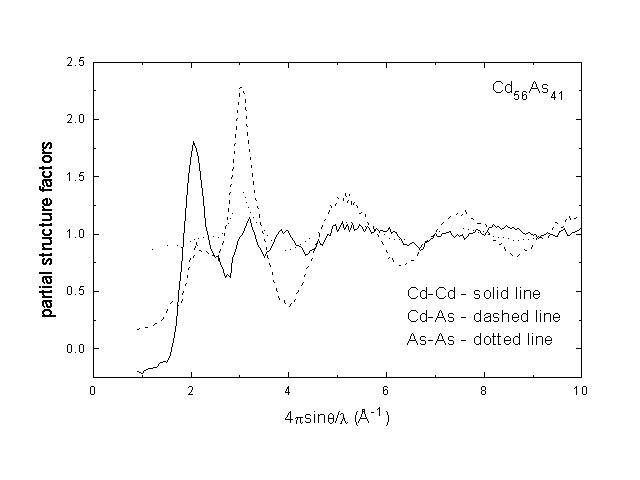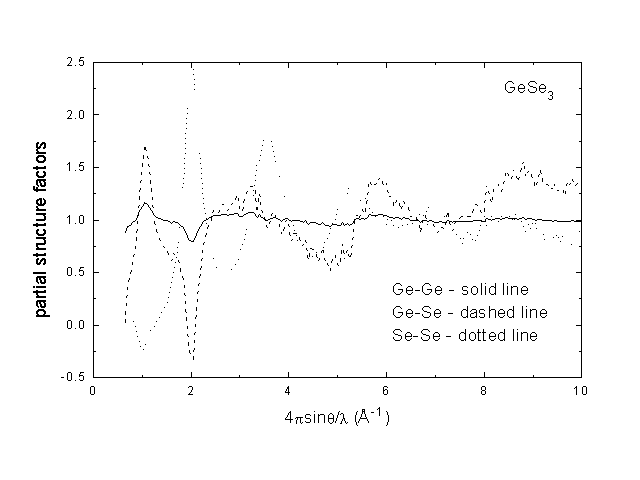
DETERMINATION OF PARTIAL STRUCTURE FACTORS FOR AMORPHOUS MATERIALS BY ANOMALOUS X-RAY SCATTERING
A. Burian1, A. Ibanez2, and D. Raoux2
1Instytut Fizyki, Uniwersytet Slaski,
ul. Uniwersytecka 4, 40-007 Katowice, Poland
2Laboratoire de Cristallographie,
UPR 5031 CNRS, 38042 Grenoble, France
Keywords: non-crystalline materials, anomalous x-ray scattering, partial structure factors, synchrotron radiation
The structural information for non-crystalline materials as glasses, amorphous films or liquids comes mainly from wide-angle x-ray, neutron or electron scattering and extended x-ray absorption fine structure. The structure of such materials is usefully expressed in terms of radial distribution function (RDF), which is obtained from the structure factor (SF) through Fourier transformation. When a sample contains N atomic species there are N(N+1)/2 distinct partial structure factors (PSFs). The PSFs yield the partial radial distribution functions (PRDFs), which are the basis of the structural analysis of a multicomponent non-crystalline material. It is essential to point out that knowledge of the PSFs is the most complete information which can be obtained from a scattering experiment. The resonant changes in the x-ray scattering factor can be used to vary the weights Wij of the individual PSFs Sij(K) to the intensity scattered by a multicomponent material, characterized by the total SF S(K) as:
S(K) = SNi=1SNj=1 Wij (K) Sij (K) ,
Wij(K) = cicj Re[(fif j*)/<f2>], where ci and fi are the atomic concentration and the atomic scattering factor of i-th atomic species, K = 4p sin q /l is the scattering vector [1]. These changes are achieved by tuning the energy of the incident beam near an absorption edge of each constituent atom. The availability of intense radiation sources as synchrotrons has made it possible to perform such experiments. However, the present experimental precision in measuring the intensities scattered by a non-crystalline body is not sufficient to extract PSFs using the standard numerical routines as linear least-squares, LU decomposition and backsubstitution or Gauss-Jordan elimination because of the relatively weak variations in the Wij coefficients. This leads to so-called ''ill-conditioning'' of the system and prevents a realiable determination of the PSFs using the straightforward methods and therefore a more complicated technique is required. In the present work we describe the determination of the PSFs for the amorphous Cd-As films containing 41 and 74 at.% As and the GeSe3 and GeSe5 glasses. A combined biased estimator, which utilises the regularization and truncated singular value decomposition methods has been applied to extract the PSFs minimizing the effects of ill-conditioning of the system [2].
The x-ray scattering data were collected on the wiggler beam line of the DCI storage ring at LURE (Orsay, France) [3,4]. Six data sets: four total and two differential SFs were used to construct the system of simultaneous equations for each sample [5]. Applicability of the developed routine is demonstrated for the investigated samples. An analysis of the stability and uniqueness of the obtained solutions show that the proposed numerical technique can be used as a way to determine the PSFs from anomalous x-ray scattering data, collected using synchrotron radiation.

